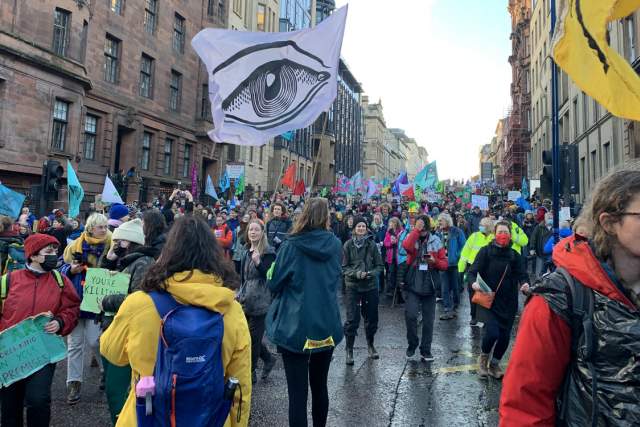Tuck Professors Coedit First Handbook on Business and Climate Change
Anant Sundaram and Robert Hansen gathered 41 authors to take a comprehensive look at how business intersects with climate change.

When Anant Sundaram created the Tuck course Business and Climate Change, in 2009, it was the first course of its kind at a U.S. business school.
The idea for the course came, in part, from Robert Hansen, the Norman W. Martin 1925 Professor of Business Administration, who had taught a course on business and the natural environment in the 1990s. Now Sundaram, a clinical professor of business administration, and Hansen have partnered and innovated again, but this time as co-editors of The Handbook of Business and Climate Change (Edward Elgar, 2023), the first handbook to comprehensively address how businesses are impacted by and responding to climate change.
Sundaram and Hansen gathered 41 authors from the worlds of academia, business, government, and NGOs to tackle the complex challenges and opportunities of climate change in 23 chapters. Some of the authors have Tuck affiliations, such as Paul Argenti, professor of corporate communication; visiting professor Thomas Lawton; and Scott G. Fisher D’93 T’98, chair of the advisory board for the Arthur L. Irving Institute for Energy and Society.
The handbook is organized into six parts, starting with the business case for climate concerns, and then detailing the impacts and responses for key industries such as banking, insurance, aviation, and electricity. Part three covers issues related to corporate strategy and leadership in the climate economy. The remainder of the book discusses functional perspectives and corporate practice, climate finance, and reflections on the future.
In the following interview, which has been edited and condensed for clarity, Sundaram and Hansen discuss their motivations for producing the book and talk about some of the biggest challenges and opportunities as the world responds to climate change.
Why did you want to produce a handbook on business and climate change?
Hansen: There’s a big political debate about the public policy response to climate change. I wanted to show the world that, in the meantime, businesses have taken it upon themselves to make a lot of progress on mitigating climate change. There’s a lot of activity, and much of it is well-meaning and impactful.
Sundaram: When I started teaching my course on this, I realized that businesses were already five to 10 years ahead of where business schools were on this issue. And this was in the absence of any policy or carbon pricing. The standard view of businesses is that they’re in a race to the bottom, to cut corners and cut costs, but with their response to climate change, it’s the opposite. This is a huge collective action problem that businesses are navigating under the radar, without shouting about it from the rooftops, which I find quite remarkable.
“The standard view of businesses is that they’re in a race to the bottom, to cut corners and cut costs, but with their response to climate change, it’s the opposite. This is a huge collective action problem that businesses are navigating under the radar, without shouting about it from the rooftops.”
—Anant Sundaram
What do you see as the top challenges in the fight against climate change?
Sundaram: One major challenge is the carbon emissions from supply chains. As supply chains have shifted to less resource-efficient areas of the world, such as China, India, Vietnam, and Brazil, the processes of making so many of the products consumed in the West are very carbon intensive. Firms in developed nations tout that their operations are carbon neutral, but those statements exclude their supply chains, which are often outsourced to carbon-intensive economies.
Hansen: Another challenge is the current hodgepodge of regulations, mandates, and quotas; they are not coordinated, and therefore businesses lack strong signals about how they should respond. It leads to a lot of inefficiencies, waste, and duplication of efforts.
Sundaram: The third major challenge is starting to happen now and will only get worse: energy poverty and inequality, and the attendant social unrest. We have seen this with the Yellow Vest movement in France. As governments increase the price of emitting carbon, the one billion people who already can’t afford modern energy will be even worse off.
How do you see the business opportunities in the transition away from carbon-based energy?
Hansen: There are tremendous opportunities. One example is the transition to clean electricity generation and distribution. The scale of investment needed for that is in the trillions of dollars. Carbon offsets are another huge opportunity. And if you look at the Inflation Reduction Act, the amount of money flowing to companies is massive. And that’s partly why businesses have responded so quickly to climate change: there are all these subsidies and incentives, and businesses are taking advantage of them, which is good because they reduce emissions.
What gives you hope?
Sundaram: Clean energy technologies are diffusing to developing countries. Countries like India and China have become remarkably more energy efficient than they were 10 or 20 years ago. What excites me is that a lot of this is happening under the radar. What we’re saying in this book is: Look, here are some ways carbon mitigation is getting done, and a lot of it is authentic. The chapters in our handbook offer a glimpse of what is possible by bringing together under one umbrella a set of important business-driven insights that enable cost-efficient and effective solutions to slow climate change.

